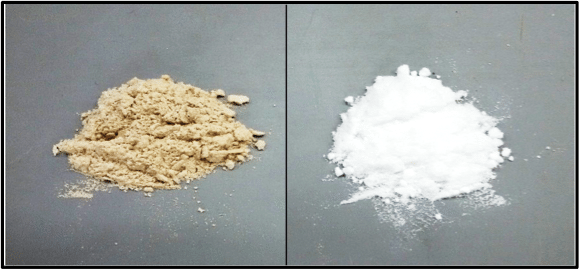Struvite (MgNH4PO4.6H2O, MAP) precipitation is an effective method to recover ammonium nitrogen (NH4-N) from wastewater into a valuable and environmental friendly material. It is crystallized by a chemical reaction between NH4-N, Mg and P, which is affected by several factors, mainly pH, molar ratios, foreign ions and mixing intensity (G). Landfill leachate (LL) contains high concentration of NH4-N that should be treated properly to avoid the environmental pollution problems. Therefore, the aim of this study is to develop a sustainable approach for NH4-N recovery from municipal LL via MAP precipitation technology. The study investigated a low-cost P source, optimized NH4-N recovery in terms of pH, Mg:N, K:N and G, studied the effect of organic matter and determined the effect and sorption mechanism of cadmium (Cd) and nickel (Ni) during MAP precipitation. Three types of waste bones were tested for low-cost P source; fish, chicken and cow waste bone ash. Fish bone ash contained the highest P content (17% wt.). The P extraction by acidic leaching was optimized by Response Surface Methodology (RSM) and the results showed that applying 2M H2SO4 and 1.25 kg H2SO4/kg ash resulted with extracting 95% of P. The extracted P solution (150 g-P/L) was applied successfully in MAP precipitation. Recovery of NH4-N in synthetic LL was optimized by RSM. Maximum NH4-N recovery (90%) was achieved at pH 8.5, Mg:N = 1.25, K:N = 0.1 and G = 95 s-1. The effect of organic matter on MAP recovery was determined using synthetic and actual LL (filtered and unfiltered). Propionic, butyric and acetic acids formulated the organic content in synthetic LL, in which an insignificant effect was noticed with minor removal of total organic carbon (TOC) (6.30-13.96%). For actual LL, NH4-N recovery efficiencies were 93%, 71% and 28% using MgCl2+Na2HPO4, MgO+P solution and MgO+Na2HPO4, respectively. It was also found that Cd and Ni were co-precipitated with MAP, forming struvite analogues, which could affect the purity of MAP. Sustainability of NH4-N recovery has to be further improved to be efficient for large-scale applications of LL treatment.
 SEM images of precipitates after Mg-P mixture
SEM images of precipitates after Mg-P mixture
Harvested struvite from filtered actual LL sample (left) and synthetic LL (right)
